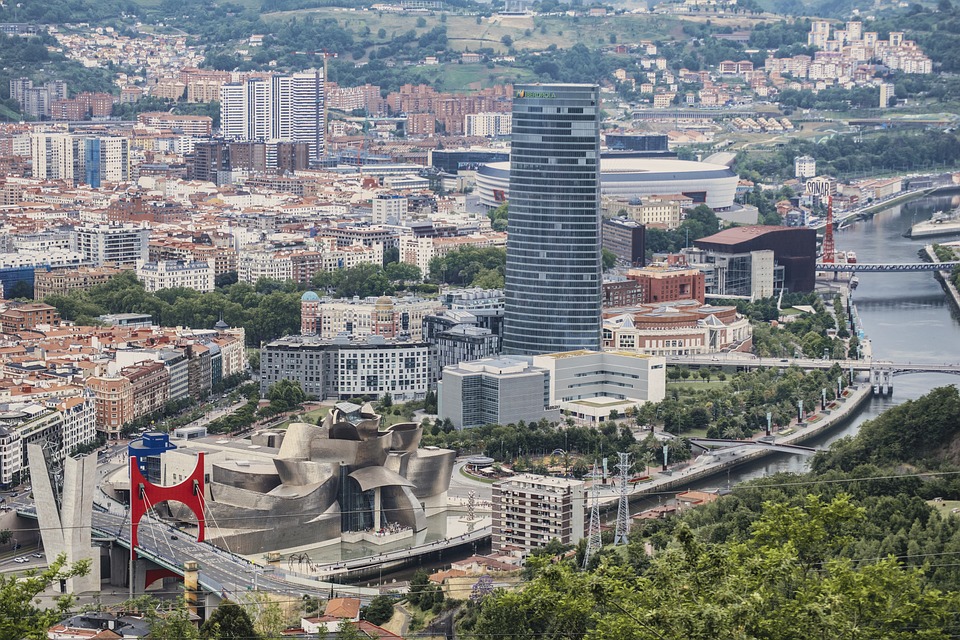Introduction
Bilbao, a city in the Basque Country of Spain, is not only famous for its cultural attractions but also for its architectural wonders. The cityscape boasts several iconic bridges and modern infrastructure that have become symbols of Bilbao’s transformation into a cutting-edge destination. Let’s explore some of these architectural marvels that have captivated locals and visitors alike.
The Zubizuri Bridge
The Zubizuri Bridge, also known as the “White Bridge,” is a stunning pedestrian footbridge designed by world-renowned architect Santiago Calatrava. Its sleek white curves and elegant design make it a focal point in the city. Spanning over the Nervion River, the bridge connects Bilbao’s two sides and provides a mesmerizing view of the surrounding landscape. It has become an emblematic structure that symbolizes the city’s modernity and commitment to contemporary architecture.
The Bizkaia Bridge
The Bizkaia Bridge, often referred to as the “Transporter Bridge,” is an engineering masterpiece that dates back to 1893. Designed by Alberto Palacio, a disciple of Gustave Eiffel, this unique bridge combines a suspended gondola system with a horizontal structure. It allows road and pedestrian traffic to cross the Nervion River while ships pass underneath. Designated as a UNESCO World Heritage Site, the Bizkaia Bridge is not only a functional element of Bilbao’s infrastructure but also a symbol of industrial heritage.
The Bilbao Metro
Bilbao’s metro system, designed by Norman Foster, is another testament to the city’s commitment to modern infrastructure. Known for its sleek and futuristic design, the metro network seamlessly integrates with the urban landscape while providing efficient transportation for residents and visitors. The use of glass and steel in the station designs creates a sense of openness, and the efficient layout ensures convenient connections between different parts of the city. Furthermore, the Bilbao Metro has garnered international recognition for its sustainability efforts, showcasing Bilbao’s dedication to environmental responsibility.
FAQs Section
What is the best time to visit Bilbao to witness these architectural marvels?
The best time to visit Bilbao for experiencing these architectural marvels is during the spring season (April to June) or early fall (September to October). The mild temperatures and limited rainfall during these periods make exploring the city’s outdoor attractions, including the bridges and metro stations, more enjoyable.
Can visitors have a close look at the architectural details of these structures?
Yes, most of these architectural marvels are open to the public and allow visitors to have a close look at their intricate designs. The Zubizuri Bridge, for example, offers a pedestrian pathway, providing an opportunity to appreciate its architecture up close. The Bizkaia Bridge also allows visitors to access its gondola and even provides panoramic views from its upper level. Similarly, the Bilbao Metro stations are easily accessible, allowing visitors to marvel at their modern and innovative designs.
Are there guided tours available specifically focusing on these architectural marvels?
Yes, Bilbao offers guided tours that specifically highlight its architectural marvels, including the bridges and modern infrastructure. These tours are conducted by knowledgeable guides who provide insights into the history, design, and significance of these structures. Participating in a guided tour can offer a more comprehensive understanding of the architectural excellence that Bilbao has to offer.
What other notable landmarks should visitors explore in Bilbao?
In addition to the iconic bridges and modern infrastructure, Bilbao boasts several other notable landmarks that are worth exploring. The Guggenheim Museum, designed by Frank Gehry, is a masterpiece of contemporary architecture and holds an impressive collection of modern and contemporary art. The Casco Viejo, the historic old town of Bilbao, is also a must-visit, with its charming narrow streets, vibrant plazas, and historical buildings. The Euskalduna Conference Centre and Concert Hall, another architectural gem, hosts various cultural events and concerts throughout the year.

